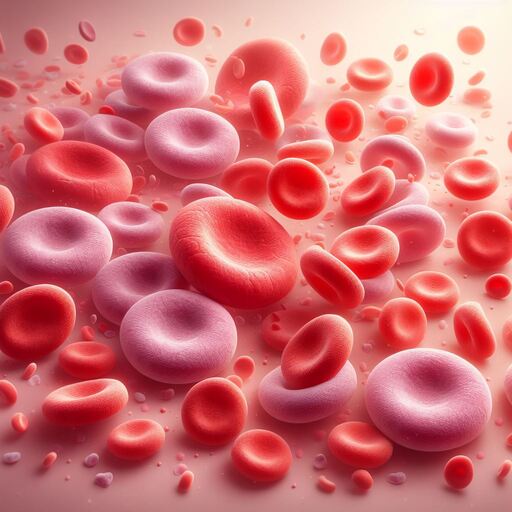Confronting the Causes and Consequences of Anemia
Confronting the Causes and Consequences of Anemia
Anemia, often characterized by low levels of hemoglobin in the blood, can have profound effects on health and well-being. Referred to as “Hemoglobin Hollows,” this condition is a significant health concern affecting millions globally. In this article, we will explore the causes, consequences, and management of anemia, empowering readers to confront and address this often underestimated health issue.
Understanding Anemia: Causes and Classification
Anemia can stem from various underlying factors that lead to a deficiency in red blood cells (RBCs) or hemoglobin. The causes of anemia can be broadly categorized into several types:
- Iron Deficiency Anemia: This is the most common form of anemia worldwide, resulting from inadequate iron intake, chronic blood loss (e.g., from gastrointestinal bleeding or menstruation), or poor iron absorption. Iron is essential for hemoglobin production, and its deficiency leads to decreased RBC synthesis.
- Vitamin Deficiency Anemias: Anemia can also arise due to deficiencies in essential nutrients like vitamin B12 (cobalamin) or folate (folic acid). These vitamins are crucial for RBC production, and their deficiency can cause impaired cell division and maturation, leading to megaloblastic anemia.
- Chronic Disease Anemias: Certain chronic conditions such as chronic kidney disease, inflammatory disorders (e.g., rheumatoid arthritis), or cancers can impact the body’s ability to produce or maintain healthy RBCs, resulting in anemia of chronic disease.
- Hemolytic Anemias: In hemolytic anemias, RBCs are destroyed prematurely either within the bloodstream or within the spleen, leading to a shortage of functional RBCs. This can be caused by inherited disorders, autoimmune conditions, infections, or exposure to certain medications or toxins.
- Genetic Disorders: Inherited conditions affecting hemoglobin structure or RBC production, such as sickle cell disease or thalassemia, are significant causes of anemia in certain populations.
Consequences of Anemia on Health
Confronting the Causes and Consequences of Anemia
The consequences of anemia can be far-reaching and impact various organ systems due to reduced oxygen delivery. Some of the common consequences of anemia include:
- Fatigue and Weakness: Decreased oxygen supply to tissues can lead to persistent fatigue, weakness, and reduced physical endurance, affecting daily activities and overall quality of life.
- Shortness of Breath: As the body compensates for decreased oxygen levels, individuals with anemia may experience difficulty breathing, especially during exertion or physical activity.
- Paleness: Anemia often presents with pallor, particularly noticeable in the skin, mucous membranes, and conjunctiva of the eyes.
- Heart Problems: Severe anemia can strain the heart as it tries to compensate for decreased oxygen-carrying capacity, leading to an increased risk of palpitations, rapid heart rate (tachycardia), and in severe cases, heart failure.
- Cognitive Impairment: Inadequate oxygen supply to the brain can impair cognitive function, causing difficulties with concentration, memory, and overall mental clarity.
- Complications in Pregnancy: Anemia during pregnancy increases the risk of maternal complications such as preterm birth, low birth weight, and postpartum hemorrhage.
- Weakened Immune System: Chronic anemia can suppress the immune system, making individuals more susceptible to infections and impairing wound healing.
Diagnosis and Management
Confronting the Causes and Consequences of Anemia
Diagnosing anemia involves a thorough evaluation by a healthcare provider, including a detailed medical history, physical examination, and specific laboratory tests. Common diagnostic tests for anemia include:
- Complete Blood Count (CBC): This test measures hemoglobin levels, RBC count, hematocrit (percentage of blood volume occupied by RBCs), and mean corpuscular volume (MCV) to assess RBC size and morphology.
- Peripheral Blood Smear: This test allows for the microscopic examination of blood cells to identify abnormalities in RBCs, such as size, shape, and color.
- Iron Studies: Blood tests to assess iron levels, serum ferritin (a marker of iron stores), transferrin saturation, and total iron-binding capacity (TIBC) can help diagnose iron deficiency anemia.
- Vitamin B12 and Folate Levels: Measurement of serum vitamin B12 and folate levels helps diagnose megaloblastic anemia due to vitamin deficiencies.
Treatment and Prevention
The treatment of anemia depends on its underlying cause and severity. Treatment options may include:
- Iron Supplementation: Oral iron supplements are prescribed for iron deficiency anemia to replenish iron stores and stimulate RBC production.
- Vitamin Supplements: Vitamin B12 injections or oral supplements are used to treat anemia caused by vitamin deficiencies.
- Treatment of Underlying Conditions: Managing chronic diseases or addressing other underlying causes of anemia is essential for effective treatment and prevention of recurrence.
- Blood Transfusion: In severe cases of anemia or acute blood loss, blood transfusions may be necessary to rapidly restore RBC levels and improve oxygen delivery.
- Dietary Changes: Eating a balanced diet rich in iron, vitamin B12, folate, and other essential nutrients can help prevent certain types of anemia.
Conclusion
In conclusion, anemia is a significant health issue with various causes and consequences. Recognizing the signs and symptoms of anemia, undergoing appropriate diagnostic testing, and receiving timely treatment are essential for managing this condition effectively. By addressing the underlying causes of anemia and restoring normal hemoglobin levels, individuals can improve their quality of life and reduce the risk of complications associated with this condition. If you suspect you may have anemia or experience symptoms suggestive of the condition, consult a healthcare professional for evaluation and personalized management. Together, we can confront “Hemoglobin Hollows” and promote optimal health and well-being for all.
Confronting the Causes and Consequences of Anemia

